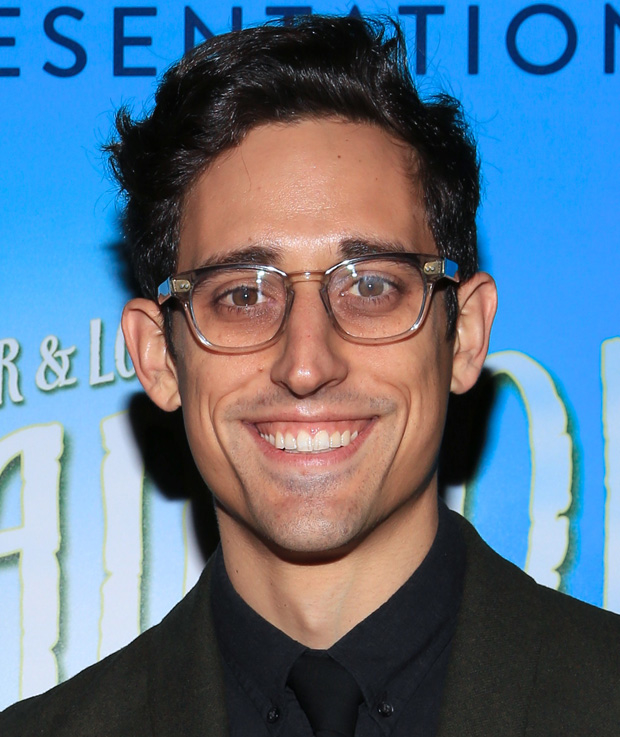Ballet Wunderkind and Newly Minted Tony Nominee Justin Peck Makes Carousel Dance
New York City Ballet’s Peck celebrates his Broadway debut as a choreographer.
It's a coup for Broadway to get a taste of Justin Peck's work. At 30, Peck is one of the dance world's busiest and most acclaimed young choreographers, simultaneously on the artistic team at New York City Ballet (where he's also a principal dancer) and creating work across the country. But when an offer as enticing as Carousel on Broadway, with director Jack O'Brien at the helm, came his way, he couldn't say no.
Peck's first exposure to the Rodgers and Hammerstein musical was through the 1956 film. "My immediate thought," he says, "was that it had one of the most glorious scores ever written. I loved how it homed in on the coastal New England community, and that dance was a big part of telling the story, of exposing community dynamics, and providing visual tone."
Peck has paralleled that idea in his work on this revival, which emphasizes the issues of social class and "belonging" that are so present in the text. Here, the newly minted Tony, Drama Desk, and Outer Critics Circle Award nominee opens up about the way his dances function in the show and what led him to choreograph a big Broadway revival.

(© Tricia Baron)
Where did you begin when you're creating the choreography for Carousel? How were you influenced by Agnes de Mille's work on the original production?
I watched videos of the original de Mille choreography, the Kenneth MacMillan choreography from the 1994 Lincoln Center revival, and even caught a performance of the Chicago Lyric Opera production. Once I had a full comprehension of what had come before, I never looked again at the material. I wanted to create my own interpretation. Producer Scott Rudin encouraged me to dive deeper into the choreography of the show and create a version of Carousel that incorporates more dance in new and surprising ways.
One of the biggest surprises is the expansion of the number "Blow High, Blow Low," danced by Amar Ramasar as Jigger and the company. How did you create that number and why did you turn it into a big dance break?
I had an idea early on of turning the role of Jigger Craigin into a virtuosic dance part, which is where Amar came into the mix. In all the versions I've seen, Jigger sings "Blow High, Blow Low," and then, if there is any dance at all, he sort of stands to the side while the ensemble dances. I wanted to integrate Jigger further into the makeup of the show and turn it into a huge dance number for the sailor men, which required some savvy musical restructuring, thanks to the help of musical arrangers Andy Einhorn and David Chase.
The goal of the number was to present a glimpse into the lifestyle of the New England whaler community through dance. I did research on whalers from that area and took a trip out to the Whaling Museum on Nantucket. The movement for the sailor's number is a representational collage of ship tasks, games played to fend off boredom, and the distinct shorthand language commonly used by New England whalers while they are out at sea. Similar to how whalers work together on their boats, the dancing in the number is perfectly coordinated and balanced between the ensemble.
When Billy [Joshua Henry] tries his hand at blending in with the group, which happens for a moment right in the middle of the number, he clearly doesn't have the experience or vocabulary to measure up with the rest of the sailors. His placement against the background of this number further isolates him in relation to the rest of the community. At this point, he no longer has the fairgrounds community, he doesn't fit in with the community at Nettie's spa, and he can't even figure out how to fit in with sailors. He's caught somewhere in between, with personal issues of "belonging" that go on to affect his relationship with Julie. There is a lot of secondhand nuance that exposes greater depth of the characters like this throughout the number.

(© Julieta Cervantes)
What is the biggest difference between choreographing a ballet for a Broadway musical and choreographing a ballet for New York City Ballet? Was there a learning curve?
With choreographing the ballet in Carousel, storytelling comes first. The goal is to give a comprehensive glimpse of the beauty, challenges, and struggle of Louise's life in relation to her community. We had to paint a vivid-enough picture in order to believe that Billy would have the emotional impetus to return down to earth to help his daughter. The goal was also to pull this off using a movement vocabulary that is definitively my own.
Given the challenges, I spent a substantial amount of time in preproduction developing this. There is more flexibility with creating a new ballet for New York City Ballet in the sense that I can create an abstract work that has nothing to do with literal storytelling. But honestly, I like the challenges of both worlds. Sometimes the best work comes out of working within certain parameters.







